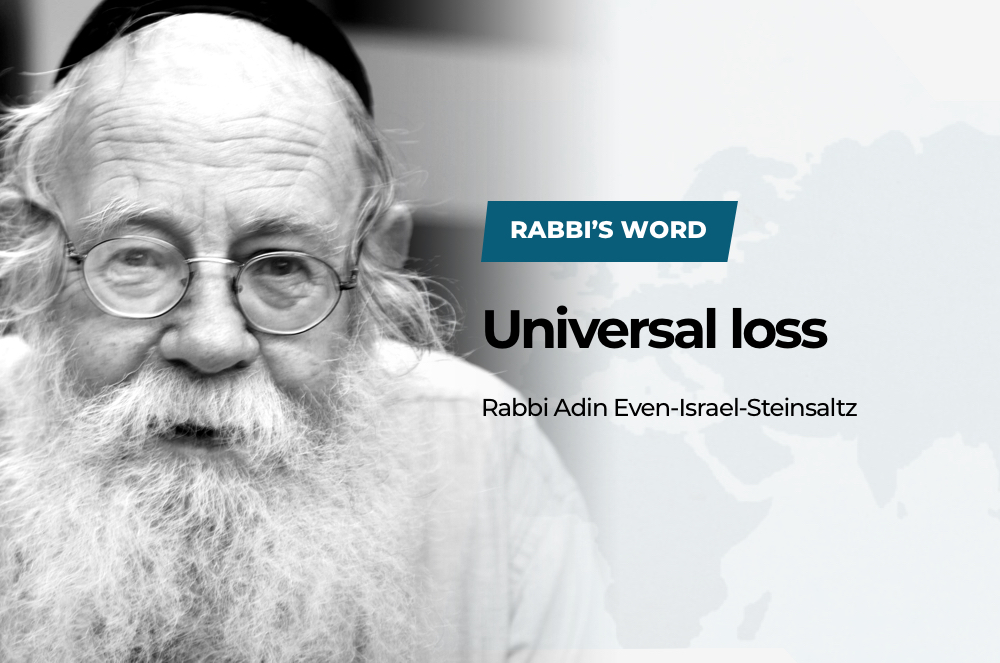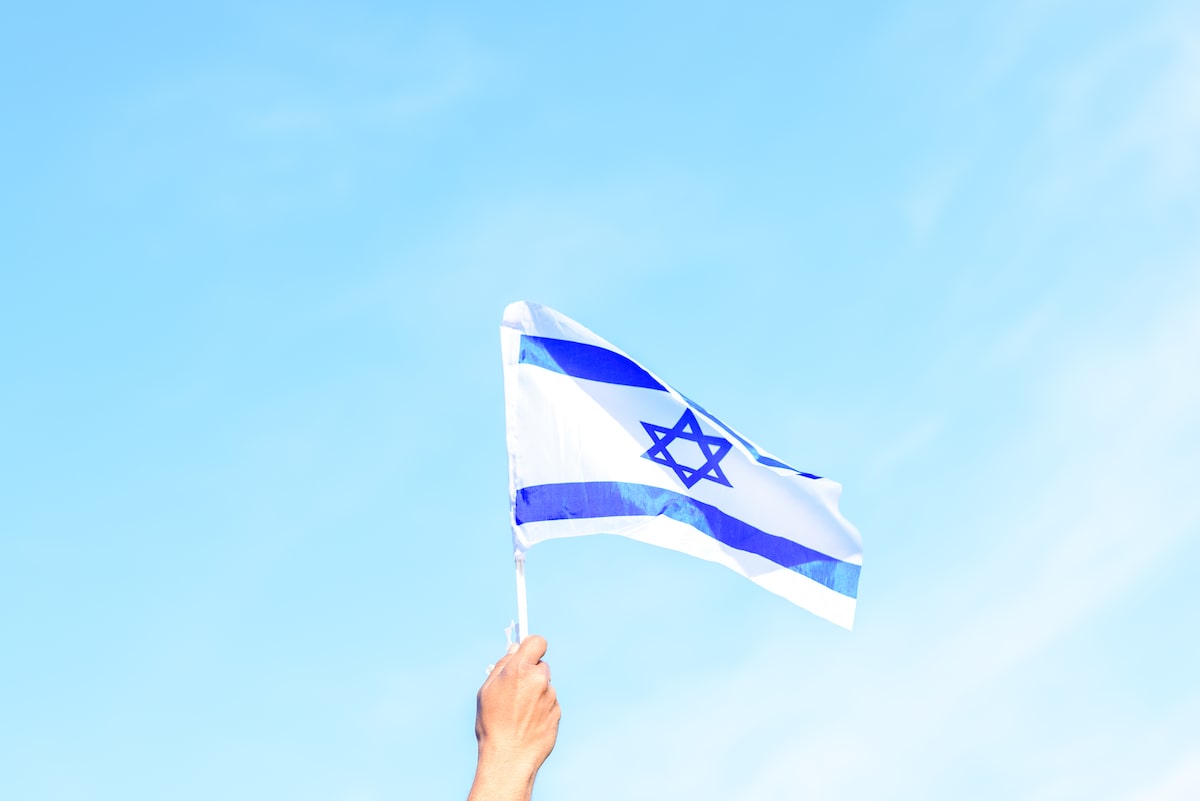
On the night of Tish’ah be-Av (July 29), when the Jewish people devotes itself again to mourning for all that it has lost during its long exile; after everyone is seated on the ground and before the Kinot (lamentations) are recited, the custom is that the one who leads the prayers rises and proclaims to the congregation, “Today marks such-and-such many years since the destruction of our Sanctuary.” For the essence of the mourning over the great catastrophe, over the years of exile and all that they have entailed, returns to the focal point of this mourning – to the destruction of the Temple and city of Jerusalem.
The destruction of Jerusalem and the Temple is for us more than the destruction of our historical capital and our most sacred site. It is not merely a memory of a tragic event that occurred long ago. Rather, it is a blow to the vital center of the Jewish people.
What is more, the whole world is stricken and cannot return to its normal and rectified state until the city of Jerusalem and the Temple are rebuilt; for Jerusalem is the center point of the world’s existence.
The Midrash describes Jerusalem’s essential place in the world: “Abba Hanan said in the name of Samuel Hakatan: This world is like a person’s eyeball. The white of the eye is the ocean surrounding the world; the iris is the inhabited world; the pupil of the eye is Jerusalem; and the face [i.e., the reflection of the observer] in the pupil is the Holy Temple. May it be rebuilt speedily in our days.” (Tractate Derekh Eretz Zuta 9, end).
The ruin of Jerusalem is for us the ruin of all of existence, and ever since a curtain of sadness and darkness has covered the face of reality.
The mourning over Jerusalem is more than a one-time memorial of a once-a-year day of mourning. All of Jewish life is continually suffused with mourning – in remembrance of the hurban (destruction).
For us, the sharply worded verses “If I forget you, O Jerusalem, let my right hand forget its skill; let my tongue adhere to my palate if I fail to remember you, if I do not raise Jerusalem above my highest joy” (Psalms 137:5-6) are not mere oratory; they are a living reality, practical and actual guidance on the path of life, in remembering Jerusalem at all times.
This sorrow and loss should be recalled at all times, even in joyous moments. When the table is set to host guests for a meal, something should be left incomplete, in remembrance of the hurban. When a house is built, it must not be completed entirely. Part of it should remain unplastered, in remembrance of the hurban. The memory of Jerusalem should be raised at the forefront of every joyous occasion. Even amidst the joy of a wedding, ashes are placed on the groom’s head. Even under the huppah (marriage canopy), before all eyes, a glass is broken. For it is impossible for us to rejoice fully, as long as Jerusalem lies in ruins.
Thus, the mourning over Jerusalem has continued for nearly two thousand years, like a thread of tears running through our lives.
All mourning – even the deepest sorrow – tends, with time, to be forgotten. With the increasing passage of time, people learn to reconcile themselves to the sorrow and the loss.
This is equally true of both the private mourning of individuals and the communal mourning over the Temple. So many years have gone by since the destruction of the Temple that the sense of its absence has eroded. Nowadays, heartache over the destruction of the Temple is found only in one whose soul is attached, even today, to the Temple in its built state. Only one who “lives” the Temple and the anticipation of its rebuilding and restoration can feel in our time the pain of its absence.
This problem – the weakening of the evocative power of the various remembrance days – is not new. Megillat Ta’anit, “The Scroll of Fasting,” which was compiled at the end of the Second Temple period, contains a list of festive days commemorating events of salvation for Israel and victories of the kingdom of Israel during this period. This Scroll officially ceased to be authoritative, because in later generations it lost its power to evoke the national memory. The course of time and a host of new troubles and woes erased the memory of the former events and increasingly diminished the significance of the days commemorating them.
Those remembrance days that remained in effect through the ages endured not because of the magnitude of the events nor even because of the enactment of one halakhic authority or the other, but because the days took on a broader and deeper message that remained meaningful in every generation.
Tish’ah be-Av is a day on which many troubles occurred, one after the other: the destruction of the first and second Temples, the destruction of Beitar and, in later generations, too, the expulsion of the Jews from Spain, the expulsion of the Jews from England, the outbreak of World War I, et al.
However, the accumulation of tragic events is not the only cause of the intense mourning on Tish’ah be-Av. The day has become a focal point through which all of Israel’s troubles throughout the generations have been concentrated and remembered. That is to say, the day not only commemorates events that occurred on Tish’ah be-Av itself, but also includes every episode of general mourning.
Tish’ah be-Av has ceased to be a Remembrance Day for a specific event and has become an all-inclusive symbol – a remembrance day for Israel’s troubles throughout all the generations and throughout the world.
That is why among the Kinot of Tish’ah be-Av we find commemoration of all the tragedies suffered by our people ever since it was exiled from its land: kinot lamenting the destruction of Jerusalem as well as kinot commemorating the Crusades, the public burning of the Torah, Israel’s exiles in eastern lands and the evil decrees against them.
During the six years of the Holocaust, all the tragedies of the hurban, in all their terrible ferocity, reappeared upon the very body of the Jewish people ̶ the humiliation, the torture, and the cruel destruction of the whole Jewish world in Europe; and above all, systematic and total extermination unparalleled in all of history.
The Jews were once again put in the terrifying isolation of a scapegoat, a target for the seething hatred of an entire world – the fathomless cruelty of the world and its indifference. All the ancient images, all the lamentations of generations gone by, once again became a living reality. Once again, we sensed Jewish distinctness and all the pain that it entails, the hurban in all its significance.
All of this cries out to us to be remembered and not forgotten – if not every day of the year, at least on the day designated for this purpose. And there is no day on the Jewish calendar that can express all of this like Tisha B’Av, the remembrance day of national mourning, which, in all its customs and in its whole essence, has become like a day of private mourning.
Remembering the Holocaust on Tisha B’Av would likely arouse and intensify the feeling of mourning on this day among our contemporaries by lending relevance to the mourning over Jewish suffering in all generations. In addition, the Holocaust would be linked with a day that will continue to be observed in the Jewish future. Thereby, the memory of the Holocaust would be linked with the day of mourning for all the tragedies experienced by the Jewish people throughout history. And perhaps the flashes and glimpses of the redemption that are inherent in Tisha B’Av would be able to cast a clearer light on the Holocaust.



